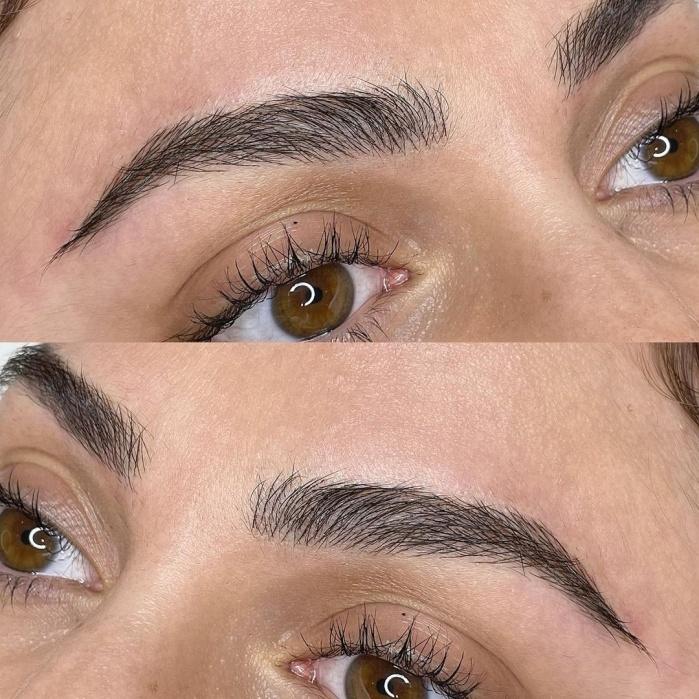Discover the potential risks that may come along with lash and brow tinting, the popular beauty trend that can enhance your features. At Centre of Wellness, we understand the importance of being well-informed before pursuing any beauty treatment. That’s why we offer online classes on lash and brow tinting, ensuring you have the knowledge and skills to perform these procedures safely. By exploring the possible risks of this beauty practice, you can make an informed decision about whether it’s right for you. Let us guide you through the potential pitfalls of lash and brow tinting, so you can make the best choices for your beauty routine. Visit us at https://beautytrainingcoursesonline.com/courses-overview/ to learn more about how we can help you gain the necessary expertise in this exciting field.
Irritation and Allergic Reactions
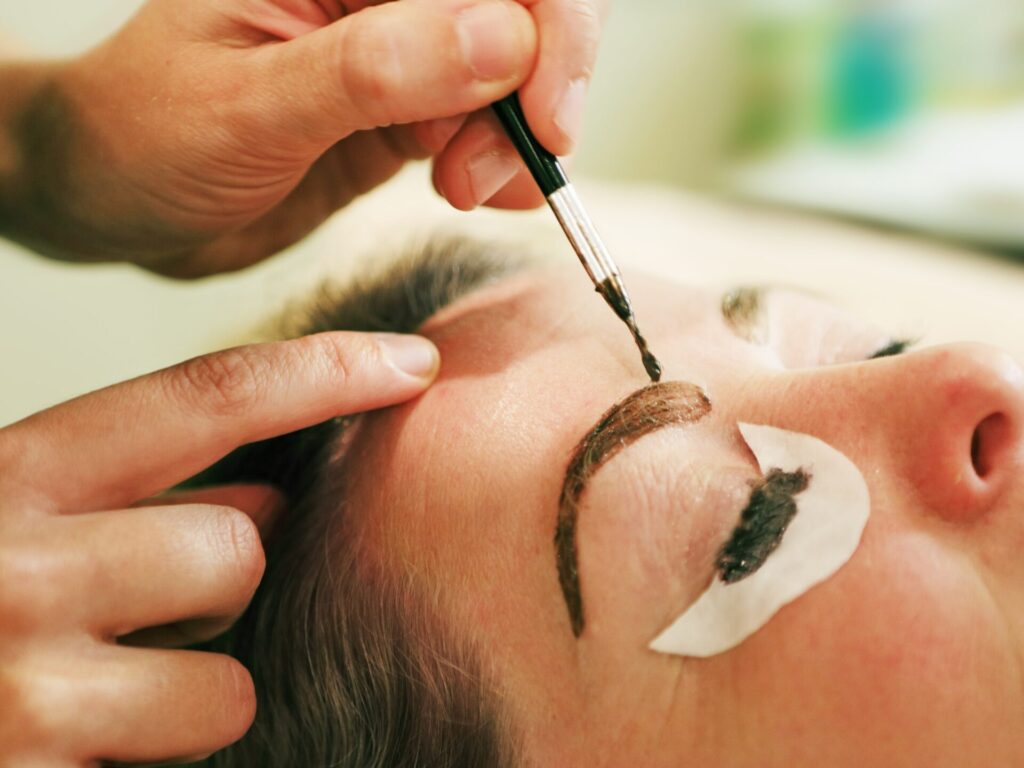
This image is property of media.allure.com.
Skin Irritation
When it comes to lash and brow tinting, one of the risks you may encounter is skin irritation. Some people may experience redness, itching, or a burning sensation on the skin surrounding the eyes and eyebrows. This can be quite uncomfortable and may last for a few hours to a couple of days. It is important to note that everyone’s skin reacts differently, so what may cause irritation in one person may not affect another. If you have sensitive skin or a history of skin allergies, it is even more crucial to be cautious.
Eye Irritation
Similar to skin irritation, lash and brow tinting can also cause eye irritation. This can lead to red, watery, or itchy eyes, making it uncomfortable to open or close them. The chemicals used in the tinting process may come into contact with the eyes, causing irritation and inflammation. safety precautions should always be taken to minimize the risk of contact with sensitive eye areas. If you experience persistent eye irritation after a lash or brow tinting procedure, it is advisable to seek medical attention to avoid any potential complications.
Allergic Reactions
Allergic reactions can occur when your body’s immune system reacts negatively to the chemicals used in lash and brow tinting products. These reactions can range from mild to severe, and can manifest as redness, swelling, itching, or hives. In rare cases, an allergic reaction can lead to difficulty breathing or even anaphylaxis, a severe and potentially life-threatening allergic response. It is essential to inform your technician about any known allergies or previous allergic reactions you have had, to reduce the risk of an adverse event. Patch tests are commonly performed prior to tinting procedures to check for any potential allergic reactions.
Eye Infections
Bacterial Infection
Eye infections can also be a risk associated with lash and brow tinting. Bacterial infections can occur if the tools or products used during the procedure are contaminated with bacteria. Symptoms may include redness, swelling, discharge, or a gritty feeling in the eyes. It is crucial to ensure that your technician follows strict hygiene practices and uses sterile equipment to minimize the risk of bacterial infections. If you suspect you may have a bacterial eye infection after a tinting procedure, it is important to seek medical attention promptly.
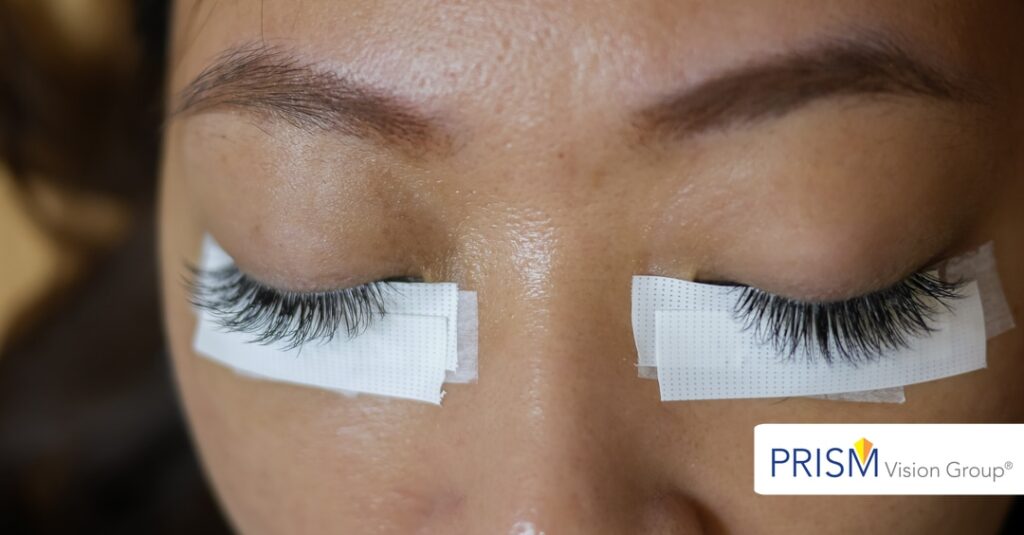
This image is property of hudsoneyemd.com.
Viral Infection
In addition to bacterial infections, viral infections can also be a concern. Viruses such as herpes simplex can be transmitted through unclean tools or improper hygiene practices. This can lead to conditions like viral conjunctivitis, commonly known as pink eye. Pink eye is highly contagious and can cause redness, itching, discharge, and even blurred vision. To avoid viral infections, it is crucial to choose a reputable and trained technician who follows proper hygiene protocols and maintains a clean workspace.
Fungal Infection
Though rare, fungal infections can occur when proper sanitation and hygiene procedures are not followed during lash and brow tinting. Fungal infections can lead to symptoms such as itching, redness, swelling, and crusting of the eyelids. If you notice any persistent or worsening symptoms, it is essential to consult a healthcare professional to determine if a fungal infection is present. Taking precautions and ensuring that the salon or technician adheres to strict hygiene practices can greatly reduce the risk of fungal infections.
Chemical Burns
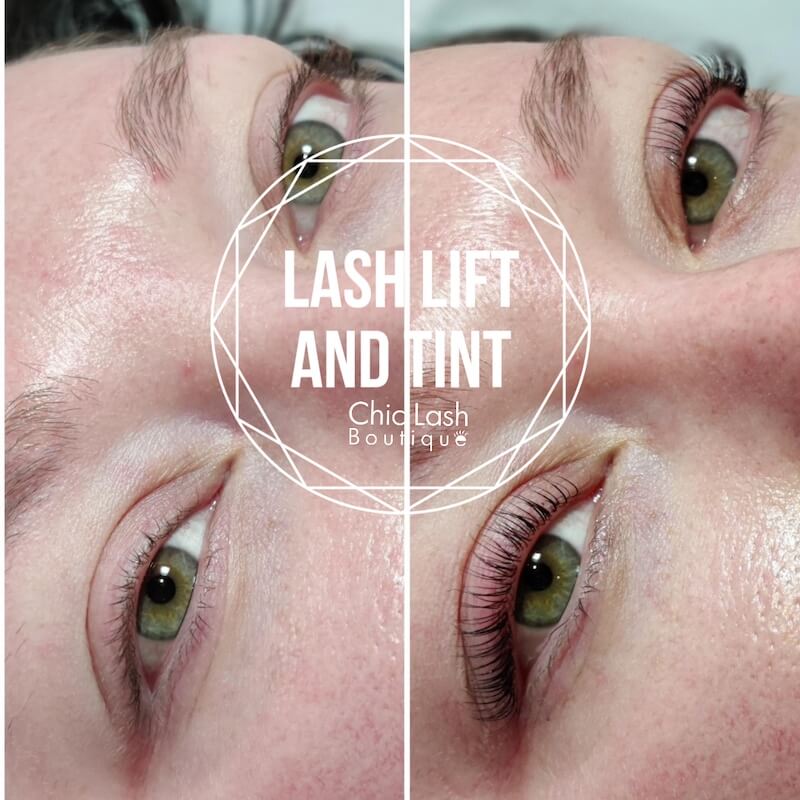
This image is property of www.chiclashboutique.com.
Improper Mixing
Chemical burns can occur when the tinting products are not mixed properly or if the wrong ratios are used. This can result in the chemicals being too strong, causing burns on the skin or around the eyes. It is vital for technicians to follow the manufacturer’s instructions for mixing and application to ensure the safety of their clients. If you experience any signs of chemical burns, such as redness, blistering, or pain, it is crucial to seek immediate medical attention.
Poor Application Technique
Another factor that can contribute to chemical burns is poor application technique. Improper application can lead to the tinting products coming into contact with sensitive areas of the skin or eyes, causing burns or irritation. Technicians should be well-trained and skilled in applying the tinting products, ensuring that they are accurately and safely placed. Before undergoing a lash or brow tinting procedure, it is important to research and choose a technician who has a good reputation and is known for their expertise in the field.
Eyelash and Eyebrow Damage
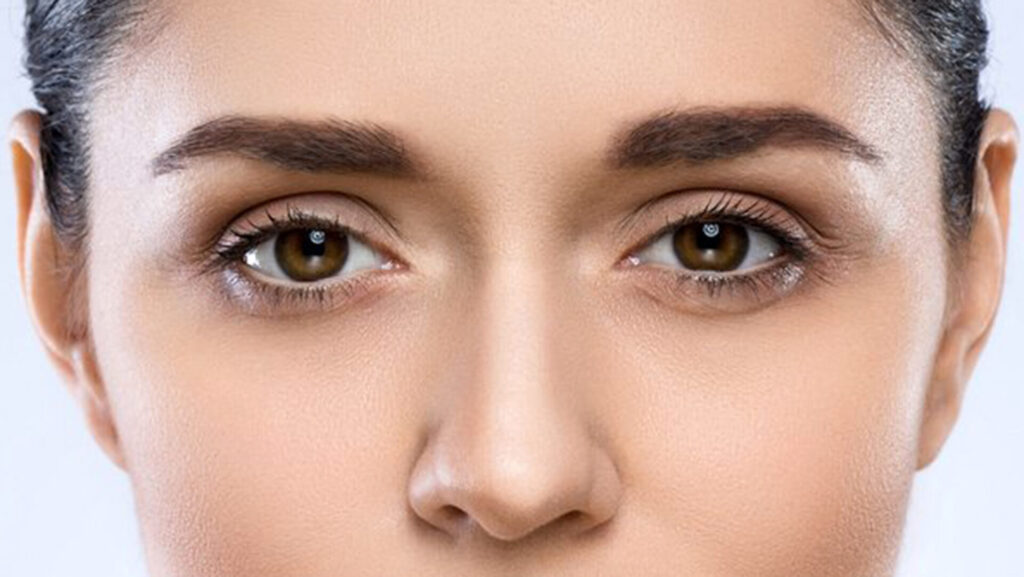
This image is property of media-cldnry.s-nbcnews.com.
Breakage
Lash and brow tinting treatments involve the use of chemicals that can weaken the hair follicles. This can make the eyelashes and eyebrows more prone to breakage. The chemicals used to tint the hair can cause it to become brittle and dry, leading to breakage when brushing or styling. To minimize breakage, it is crucial to use nourishing and strengthening products on your lashes and brows after a tinting procedure. Additionally, avoiding excessive rubbing or pulling on the lashes and brows can help maintain their health and prevent breakage.
Thinning
Apart from breakage, lash and brow tinting can also lead to thinning of the hair. The chemicals used in the tinting process can weaken the hair follicles, resulting in a reduction in hair density. This can be particularly concerning for individuals who already have sparse lashes or brows. To promote hair growth and prevent further thinning, it is advisable to use lash and brow serums that contain ingredients known to enhance hair growth. These serums can help nourish and support the hair follicles, promoting thicker and healthier lashes and brows over time.
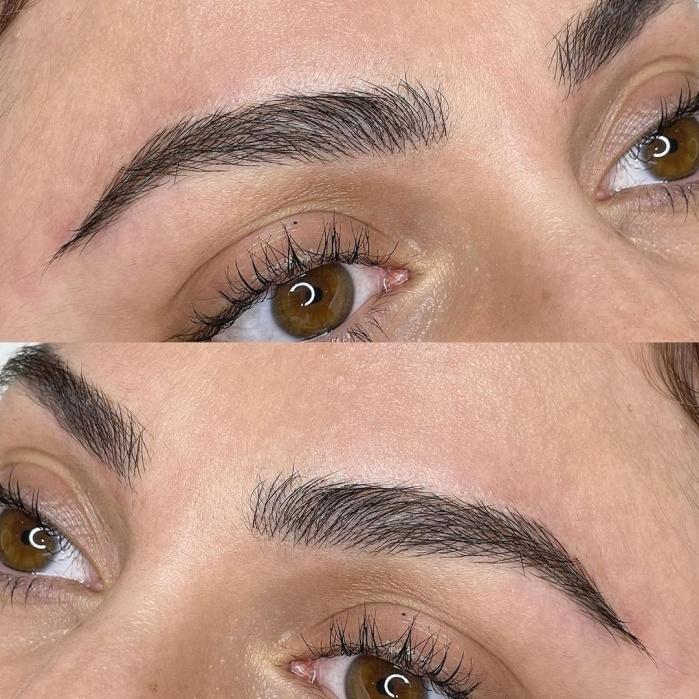
This image is property of browz.ae.
Loss
In some cases, lash and brow tinting can result in the complete loss of the hair. This can occur due to various reasons, such as allergic reactions, chemical burns, or improper application techniques. Losing lashes or brows can be distressing and affect one’s self-confidence. It is crucial to choose a trained and experienced technician who prioritizes the safety and well-being of their clients. If you notice significant hair loss after a lash or brow tinting procedure, it is important to consult a professional to understand the cause and explore options for promoting hair regrowth.
Vision Impairment
Cornea Damage
One of the more serious risks associated with lash and brow tinting is cornea damage. The cornea is the clear front part of the eye that helps focus light and plays a crucial role in vision. Improper application or accidental contact of the tinting products with the cornea can cause damage, leading to vision impairment. This can range from blurred vision to more severe complications that may require medical intervention. To minimize the risk of cornea damage, it is essential to choose a skilled technician who prioritizes safety and follows proper application techniques.
Eye Injuries
Apart from cornea damage, lash and brow tinting procedures can also pose a risk of eye injuries. The eyes are delicate and sensitive organs, and any mishaps during the process can lead to scratches, cuts, or other injuries. It is crucial for technicians to exercise caution and precision when applying the tinting products, ensuring that they do not come into direct contact with the eyes. Wearing protective eyewear and maintaining a sterile workspace can help reduce the risk of eye injuries during tinting procedures.
Skin Discoloration
Hyperpigmentation
Hyperpigmentation refers to the darkening of the skin, which can occur as a result of lash and brow tinting. This can happen when the tinting products come into contact with the skin surrounding the eyes and eyebrows. Hyperpigmentation can be temporary or, in some cases, may become a long-term issue. Individuals with darker skin tones or a history of hyperpigmentation may be more prone to this side effect. To prevent hyperpigmentation, it is important for technicians to accurately apply the tinting products and avoid contact with the surrounding skin. If you notice any changes in skin coloration after a tinting procedure, it is advisable to consult a skincare professional for guidance.
Hypopigmentation
On the other hand, hypopigmentation refers to the lightening or loss of skin color. This complication can occur due to the use of improper or low-quality tinting products. Inconsistent or inadequate coloration can result in hypopigmentation of the brows or lashes. The loss of color can be particularly noticeable on individuals with darker hair or skin tones. To avoid hypopigmentation, it is crucial to select a reputable technician who uses high-quality tinting products and follows proper application techniques.
Regulation Issues
Lack of Standardization
One of the challenges within the lash and brow tinting industry is the lack of standardized regulations. Unlike some other beauty treatments, such as hair coloring or nail services, there is no universal set of guidelines or standards for lash and brow tinting. This can lead to inconsistency in training, certification requirements, and safety protocols among different technicians and salons. It is important to do thorough research before choosing a technician, ensuring that they have received proper training and adhere to best practices.
Untrained Technicians
Another issue related to regulation is the presence of untrained technicians in the lash and brow tinting industry. Without proper education and certification, these technicians may lack essential knowledge of product ingredients, safety protocols, and potential risks. This puts clients at a higher risk of experiencing adverse events or complications during the tinting procedure. To ensure your safety, always choose a technician who has received comprehensive training and certification from a reputable institution.
Poor Hygiene Practices
Contamination
Maintaining proper hygiene practices is crucial when it comes to lash and brow tinting. Contamination can occur when the tools or products used during the procedure are not properly sanitized. This can lead to the spread of bacteria, viruses, or fungi, increasing the risk of infections or other complications. Before undergoing a tinting treatment, ensure that your technician follows strict hygiene protocols. This includes using sterile equipment, disinfecting surfaces, and properly storing and handling products.
Infection Risk
Poor hygiene practices can also elevate the risk of infections. If the technician does not follow proper sanitation procedures or fails to clean their hands adequately, they may introduce harmful bacteria or viruses into your eye and brow area. Infections can result in discomfort, prolonged healing times, and even permanent damage. To minimize the risk of infection, it is crucial to choose a technician who prioritizes hygiene and takes all necessary precautions to maintain a clean and safe environment.
Contradictions with Medical Conditions
Sensitive Skin
Individuals with sensitive skin may experience heightened risks when undergoing lash and brow tinting. The chemicals used in the tinting process can potentially irritate sensitive skin, leading to redness, itching, or inflammation. It is important for those with sensitive skin to inform their technician about their condition beforehand, allowing the technician to take extra precautions and modify the products used if necessary. Patch tests, performed prior to the procedure, can help identify potential sensitivities and minimize the risk of adverse reactions.
Eye Conditions
If you have pre-existing eye conditions, it is crucial to consult with your ophthalmologist before considering lash and brow tinting. Certain conditions, such as dry eye syndrome or chronic conjunctivitis, may make you more susceptible to complications during and after the tinting procedure. Your ophthalmologist can assess whether lash and brow tinting is safe for you and provide appropriate recommendations. Prioritizing your eye health and seeking professional medical advice is essential to avoid any potential risks and protect your vision.
Safety Concerns During Pregnancy
Hormonal Changes
During pregnancy, hormonal changes can affect your body and its reactions to various substances, including those used in lash and brow tinting. Some pregnant individuals may experience heightened skin sensitivity or increased risk of allergic reactions. The tinting products can potentially interact with these hormonal changes, leading to unexpected skin or eye reactions. It is advisable to consult with your healthcare provider before undergoing any cosmetic procedures, including lash and brow tinting, during pregnancy, to ensure your safety and the well-being of your baby.
Potential Risks to the Fetus
The safety of lash and brow tinting during pregnancy has not been extensively studied. This lack of research makes it difficult to determine with certainty whether these procedures pose any risks to the developing fetus. To err on the side of caution, many healthcare professionals recommend avoiding unnecessary chemical exposures during pregnancy. As the potential risks to the fetus are uncertain, it is advisable to postpone lash and brow tinting until after pregnancy and breastfeeding. Prioritizing the health and well-being of both you and your baby is of utmost importance.
In conclusion, lash and brow tinting can be a convenient way to enhance your appearance, but it is important to be aware of the potential risks associated with these procedures. Skin and eye irritation, allergic reactions, eye infections, chemical burns, eyelash and eyebrow damage, vision impairment, skin discoloration, regulation issues, poor hygiene practices, contradictions with medical conditions, and safety concerns during pregnancy are all potential risks to consider. To minimize these risks, it is crucial to choose a trained and experienced technician, thoroughly research the products and techniques used, and prioritize your own safety and well-being. As with any cosmetic procedure, it is important to weigh the potential benefits against the possible risks and make an informed decision.

